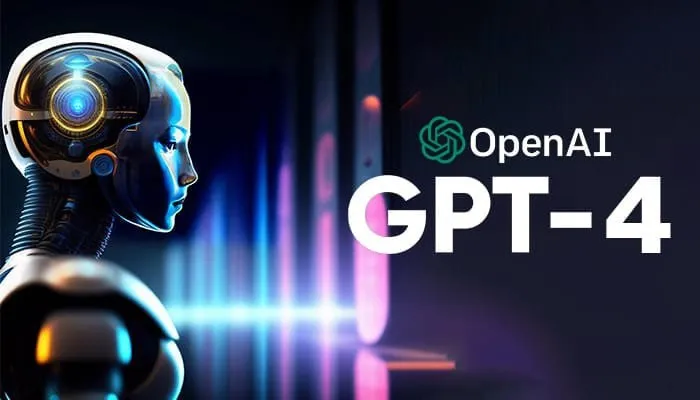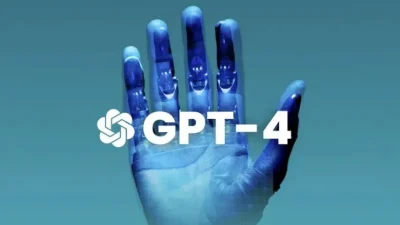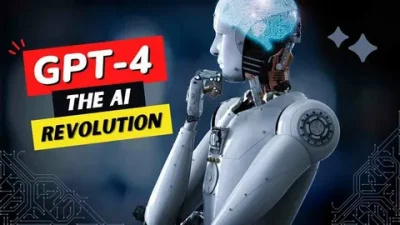OpenAI’s GPT-4 has brought a new wave of innovation to the AI landscape. As the latest iteration in the GPT series, this model introduces numerous advancements, making it a highly sophisticated tool for a variety of applications. This review dives into the major updates, focusing on improvements in accuracy, contextual understanding, and integration with APIs.

Enhanced Accuracy and Language Understanding
One of the most notable improvements in GPT-4 is its heightened accuracy in generating and interpreting text. Compared to its predecessors, GPT-4 excels in:
- Grammatical Precision.The model produces text with fewer grammatical errors, maintaining high standards of linguistic quality.
- Semantic Understanding. GPT-4 demonstrates a better grasp of complex sentences and nuanced language, allowing for more meaningful responses.
- Factual Consistency. A major leap forward is the model’s enhanced ability to provide factual information, reducing the frequency of errors or “hallucinated” facts.
For example, GPT-4 has shown remarkable accuracy in summarizing lengthy articles, offering concise yet comprehensive overviews. Additionally, its ability to understand ambiguous queries has improved, making it more effective in solving intricate problems.
Key Comparisons Between GPT-3.5 and GPT-4
| Feature | GPT-3.5 | GPT-4 |
|---|---|---|
| Grammar and Syntax | Good | Excellent |
| Factual Accuracy | Moderate | High |
| Contextual Awareness | Limited | Advanced |
| Ambiguity Resolution | Basic | Robust |
| Length of Context | Up to 8,000 tokens | Up to 25,000 tokens |
These advancements make GPT-4 a better tool for academic, professional, and creative applications where precision is critical.
Superior Context Handling
GPT-4 significantly improves its ability to handle extended context. It now supports up to 25,000 tokens in a single interaction, a substantial increase compared to GPT-3.5’s 8,000 tokens. This enhancement benefits a wide array of use cases:
- Document Analysis. The model can now process lengthy documents, offering detailed summaries or extracting key points without losing contextual relevance.
- Code Debugging. Developers benefit from GPT-4’s capacity to analyze longer scripts and provide actionable insights for debugging.
- Conversational Flow. Users can engage in extended dialogues without the model losing track of previous interactions, creating a more human-like conversational experience.
These improvements ensure that GPT-4 retains critical information across longer conversations, making it indispensable for tasks requiring sustained contextual awareness.
Improved API Integration
With GPT-4, OpenAI has streamlined API integration, allowing developers to embed the model into their applications more effectively. Key updates include:
- Customizable Parameters. Developers have greater control over the model’s temperature, max tokens, and other variables, enabling tailored outputs.
- Faster Response Times. Optimized API infrastructure reduces latency, ensuring quicker response generation.
- Enhanced Security. GPT-4 incorporates robust safeguards to prevent misuse, such as stricter content filters and improved monitoring mechanisms.
The API’s improved design also simplifies deployment across various platforms, from customer support systems to educational tools.
Multimodal Capabilities
One of GPT-4’s groundbreaking features is its multimodal ability to process both text and image inputs. This enhancement opens up new possibilities for:
- Visual Content Analysis. The model can describe images, interpret charts, and even generate captions for pictures.
- Integrated Learning Tools. Educational applications can combine text and visuals for a more engaging user experience.
- Creative Applications. Artists and marketers can use GPT-4 to create visually informed content strategies or brainstorm ideas.
Applications of GPT-4’s Multimodal Functionality
| Use Case | Description |
| Image Captioning | Generating descriptions for photos and artworks |
| Chart Interpretation | Explaining data trends from graphs or tables |
| Visual QA | Answering questions based on visual inputs |
While still in its early stages, the multimodal feature sets GPT-4 apart as a versatile tool for complex tasks.
Ethical Advancements
OpenAI has placed a strong emphasis on ethical considerations in GPT-4. Several mechanisms have been implemented to ensure the model operates responsibly:
- Bias Mitigation. Algorithms have been refined to reduce bias in outputs, promoting fairness across different contexts.
- Content Moderation. GPT-4 has stricter filters to prevent harmful or inappropriate responses.
- Transparency Tools. Users are informed about the model’s capabilities and limitations, fostering a more informed user base.
These improvements underline OpenAI’s commitment to creating AI systems that are both powerful and socially responsible.
Real-World Applications
The updates in GPT-4 have broadened its utility across various industries:
- Healthcare. The model assists in drafting patient reports, summarizing medical literature, and answering health-related queries.
- Education. GPT-4 powers personalized learning platforms, enhancing the accessibility and quality of education.
- Business. From automating customer support to generating marketing strategies, GPT-4 offers scalable solutions for businesses of all sizes.
- Entertainment. Writers and content creators can leverage GPT-4 for brainstorming, scriptwriting, and storytelling.
These applications demonstrate the versatility of GPT-4 in addressing real-world challenges effectively.
Limitations and Future Directions
Despite its significant advancements, GPT-4 is not without limitations. Some areas for improvement include:
- High Computational Costs. The model requires substantial computational resources, making it less accessible for smaller organizations.
- Factual Reliability. While improved, occasional inaccuracies persist, particularly in niche or specialized topics.
- Limited Multimodal Scope. Although promising, the image processing feature is not yet fully optimized for all use cases.
OpenAI aims to address these challenges in future iterations, focusing on cost efficiency, reliability, and expanding multimodal capabilities.
Conclusion
GPT-4 represents a significant milestone in AI development, combining advanced language understanding, extended context handling, and multimodal capabilities. Its improvements in accuracy, ethical safeguards, and API functionality make it a robust tool for diverse applications. As OpenAI continues to refine this technology, GPT-4 sets the stage for an even more powerful and versatile AI future.





